Introduction:
In a world dominated by smartphones, smart algorithms, and smarter consumers, digital marketing has become the backbone of modern business. From social media scrolls to Google searches and email inboxes, customers are constantly connected—and brands must be too.
Digital marketing in 2025 is more powerful, data-driven, and accessible than ever. Whether you’re an aspiring marketer, a small business owner, or a student, this beginner’s guide will walk you through the fundamentals of digital marketing, the tools you need, and how to build a strong online presence step-by-step.
1. What Is Digital Marketing?
Digital marketing refers to the use of digital channels such as websites, search engines, social media platforms, email, and mobile apps to promote a product, service, or brand. It combines creativity with analytics, content with coding, and strategy with storytelling.
Unlike traditional marketing, digital marketing allows you to:
- Reach a global audience in real-time
- Track user behaviour with data
- Create personalized content
- Interact directly with your audience
Whether you’re optimizing for Google search or launching a TikTok campaign, it all falls under the umbrella of digital marketing.
2. Why Digital Marketing Is Essential in 2025
2025 is seeing a major shift in consumer expectations and technology. Brands that understand and adapt to this new reality will grow, while those who don’t will struggle to stay relevant.
Here’s why digital marketing matters more than ever:
- Mobile-first world: Over 70% of users browse via smartphones
- AI tools are everywhere: From chatbots to content creation, automation boosts efficiency.
- Data is gold: Smart decisions come from real-time analytics and customer insights.
- Personalization wins: Audiences expect content that speaks directly to them.
Digital marketing isn’t just a nice-to-have—it’s your best path to visibility, engagement, and growth in today’s digital-first marketplace
3. Major Channels of Digital Marketing
a. Search Engine Optimization (SEO)
Helps your website appear in organic (non-paid) search results. A good SEO strategy involves keyword research, technical optimization, and high-quality content.
b. Search Engine Marketing (SEM):
Involves paid search advertising like Google Ads. You can drive traffic to your site instantly while targeting users by location, interests, or behaviour.
c. Content Marketing:
Creating blogs, videos, infographics, and other resources to attract, educate, and convert your audience.
d. Social Media Marketing:
Promoting your brand on platforms like Instagram, LinkedIn, Facebook, X (Twitter), and TikTok to build community and increase visibility.
e. Email Marketing:
Still one of the highest ROI channels. Send newsletters, offers, and updates directly to your audience’s inbox.
f. Influencer Marketing:
Collaborate with individuals who already have your audience’s attention to promote your brand authentically.
g. Affiliate Marketing:
Partners earn a commission by promoting your products on their blogs, YouTube channels, or social accounts.
4. How to Build a Digital Marketing Strategy (Step-by-Step)
Step 1: Define Your Goals
Be clear on what you want to achieve—brand awareness, leads, website traffic, or sales. Use SMART goals to keep things focused and measurable.
Step 2: Know Your Audience
Use surveys, social listening, and tools like Google Analytics to understand your audience’s demographics, pain points, and behaviour.
Step 3: Do Keyword & Competitor Research
Use tools like SEMrush, Ubersuggest, or Google Keyword Planner to find keywords your audience is searching for and check what your competitors are ranking for.
Step 4: Create Valuable Content
Write helpful blog posts, design infographics, shoot short-form videos, and share useful tips. High-quality content builds trust and authority.
Step 5: Choose the Right Platforms
Not all platforms are equal. If your audience is B2B, go for LinkedIn. For Gen Z, TikTok may be your winner. Choose based on where your audience spends their time.
Step 6: Promote Your Content
Use both free (organic reach) and paid (ads) strategies to distribute your content. Don’t just create—promote it actively!
Step 7: Track and Measure Everything
Use Google Analytics 4, Search Console, and social media insights to measure what’s working. Adjust your strategy based on data.
5. Digital Marketing Trends to Watch in 2025
- AI & Automation Tools – AI-generated content, chatbot support, and smart segmentation.
- Voice Search Optimization – With smart speakers, optimizing for voice queries is crucial.
- Video Dominance – Short-form video is king across all platforms.
- Interactive Content – Quizzes, polls, and calculators improve engagement.
- Privacy-first Marketing – Cookieless tracking and first-party data strategies are essential.
6. Common Tools You’ll Use as a Beginner
- Canva – For creating social media and blog graphics
- Google Analytics & GA4 – Track and analyse user behaviour
- SEMrush / Ahrefs / Ubersuggest – For SEO and keyword research
- Buffer / Hootsuite – For scheduling and managing social media
- Mailchimp / ConvertKit – For email marketing and automation
7. Final Tips for New Digital Marketers
- Be patient. Results take time.
- Stay curious. The industry changes fast.
- Focus on solving problems, not selling.
- Practice writing and storytelling—it’s your superpower.
- Network with other marketers. Learn from others’ experiences.

Conclusion
Digital marketing can feel overwhelming at first—but with the right mindset and tools, it becomes one of the most rewarding skills you can master. Whether you’re promoting your own brand, freelancing, or building a career, this guide gives you the solid foundation needed to get started in 2025.
Keep learning, keep testing, and keep creating—because digital marketing is not just the future, it’s the now.
Article Credit: Rabia Qureshi | Student of Digital Marketing Course
